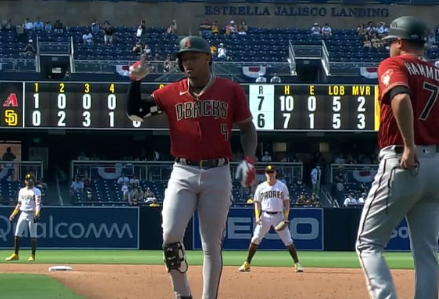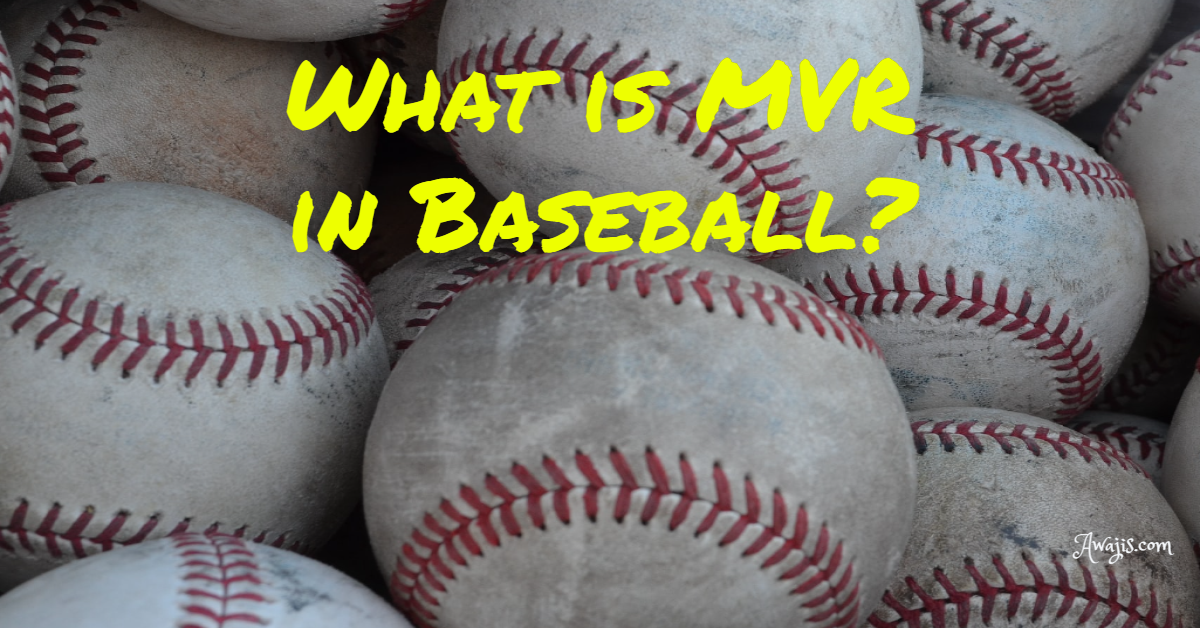What is MVR in Baseball, and what is it for? [Detailed Explanation]
What is MVR in Baseball? – If you’re a true baseball fan, you might already be fluent in the sport’s language. But if you’re completely unfamiliar with baseball terminology and want to start learning the sport’s lingo step by step, then this post is an excellent place to begin.
You may have heard the term “MVR” in baseball, but you may not know what it means. In this piece, we’ll discuss what “MVR” stands for and its purpose in the baseball game.
Additionally, we’ll discuss how the 5-visit policy came into existence and its effects on the sport. Therefore, prepare to learn some fascinating baseball history, whether you’re a true baseball fan or a casual viewer.
Moreover, knowing what MVR is will help you read a baseball scoreboard and fully enjoy the game.

What is MVR in Baseball?
MVR is an abbreviation for “Mound Visits Remaining,” which are counted by the umpire because each team is limited to a certain number of Mound Visits per game.
Mound visits can significantly impact the flow of a game by calming the pitcher’s nerves or suggesting a defensive approach.
The 5-visit rule was put in place to prevent teams from manipulating the tempo of the game on purpose and to draw in more fans by accelerating play.

In addition, any time a player or coach interrupts play to walk to the mound is considered a mound visit, but there are several exceptions, like immediately following substitutions on the offensive side or if it occurs after two visits in one inning by a coach (though not if a player initiated the visit).
Related: How Many Innings Are in College Baseball?
What exactly is a Mound Visit in Baseball?
A mound visit is a deliberate tactic taken by a coach or a non-pitcher player to go to the pitcher’s mound for a brief meeting. The motives for a mound visit vary; if a pitcher has difficulties identifying the strike zone, the coach can utilize a mound visit to help calm him/her down.
Also, he/she can use a mound visit to give another pitcher some time to warm up; a coach may decide to bring in a fresh pitcher if the team’s current condition is bad. The new pitcher must have adequate time to warm up. A mound visit can help kill time and enable the new pitcher to prepare.
After alerting and receiving permission from the umpire, the visitor is allowed to engage in normal discussion for about 30 seconds. The countdown starts as soon as he/she steps out of the dugout.
Once the visitor leaves the 18-foot circle surrounding the pitching rubber, that very mound visit is over. However, there are exceptions to this; the coach, for instance, might want to make a substitution. They are still safe to return to the pitcher’s mound.
Again, a coach can utilize the mound visit to gather his/her defense and instruct them on how to tackle the challenge ahead. Conversely, a mound visit can be initiated by players. In most cases, catchers are the main ones to do this task.
Just what is the Purpose of the Mound Visits Rule?
The rule’s goal is to prevent teams from manipulating the tempo of the game on purpose. Baseball is at its peak when there’s fast-paced action. When the game is slow, people become bored.
Besides, many people stopped watching baseball before baseball introduced this policy. The fast-paced action of sports is popular with sports fans. Before this rule was implemented, baseball was actually providing them with the reverse.
Also, if there is a pitching change, a mound visit can take as long as five minutes. This Mound Visits rule was a positive development for baseball.
Why is this Mound Visits Rule in Place?
The purpose of the MVR regulation is to speed up or increase the pace/tempo of the game. There is a common perception that baseball was a slow and dull sport before this policy was implemented.
Again, the rule states that each team is allowed five mound visits per game. If the game goes to extra innings, the amount may increase. Each pitcher is permitted a single mound visit per inning. Two mound visits in a single inning mean the pitcher must be removed from the contest.
What Counts as a Mound Visit in Baseball?
According to Major League Baseball (MLB), a mound visit is considered whenever a player or coach interrupts play to walk to the mound.
There is no set time limit to determine whether or not it is considered a mound visit. A mound visit can last as little as five seconds and still be recorded.
As previously said, each team is allotted five of these visits per game. A coach needs to think carefully before utilizing these visits because if he/she uses them all up early, he/she may regret not having any left when he/she really needs them later in the game. In a baseball game, they are best used in the latter part of the game.
Why are Mound Visits Limited?
To maintain a consistent pace of play, there is a limit on the number of mound visits per game. The same holds true for other regulations, like the pitchers’ time clock.
Baseball has traditionally been a slow and dull game, but recently that has begun to change. The MLB has made the initiative to increase the game pace in the hopes of attracting more fans or viewers.
The fact that teams could take advantage of this ability is another justification for limiting mound visit numbers. Mound visits can be useful if managed properly. However some teams started using their authority in inappropriate ways. The whole point of the latest rule modifications is to try and speed up the pace of play.
What are the Exceptions to the Mound Visits Rule?
Every team is limited to five mound visits per game. In the following circumstances, however, an exemption may be granted:
- If the pitcher needs to use a scraper to clean his/her cleats at the mound, that means things are bad.
- When a pitcher seems hurt or injured and needs a check-up by the manager or coach.
- If allegations of inappropriate substitution are made.
- When play must be halted due to external disturbances.
The pitcher may also receive a visit from the team’s players or catcher. For instance, when the pitcher fails to deliver the pitch that the catcher has requested (a cross-up). A catcher, for example, might be anticipating a curveball and instead receive a fastball.
Complex or complicated signals and communicating sequences are often bound to be ineligible in baseball, so this is nothing new.
Another scenario is when a player at bat is substituted with a pinch hitter, who then enters the field. It’s possible that he/she might desire a brief meeting to exchange with the pitcher.
The History of the MVR Rule
The limit on mound visits is rather recent. MLB introduced it in 2016 to reduce the number of times a game is put on hold due to mound visits. Without a limit on mound visits, games will inevitably be lengthier.
Between 2016 and 2019, the following changes have occurred:
2016:
In 2016, mound visits only included people from the dugouts by a manager or coach. Later that same year, the rule was modified to include all players on the pitch paying a visit to the pitcher.
2018:
In the 2018 season, a team could only use six visits per game of nine innings and an extra free one for each additional inning.
2019:
In 2019, teams could only use five visits per game of nine innings. However, conversations between an infield player and pitcher during which neither player left their respective positions were not considered mound visits. It has remained this way until the present day.
Final Thoughts
MVR is the determining factor for the remaining mound visits of each team during a baseball game. There can only be five mound visits in a baseball game; therefore, teams and their coaches need to get creative and develop accurate winning strategies.
Further, there’s been a lot of back and forth about this limit, but we all know that sports rules always change or evolve. So, if you want to succeed, you’ll have to accept the rules or policies and figure out how to work around them.
We hope you find this information helpful. Please use any of the share buttons below to share this information.
Feel free to drop any questions, comments, or contributions regarding this article in the comment section below.
